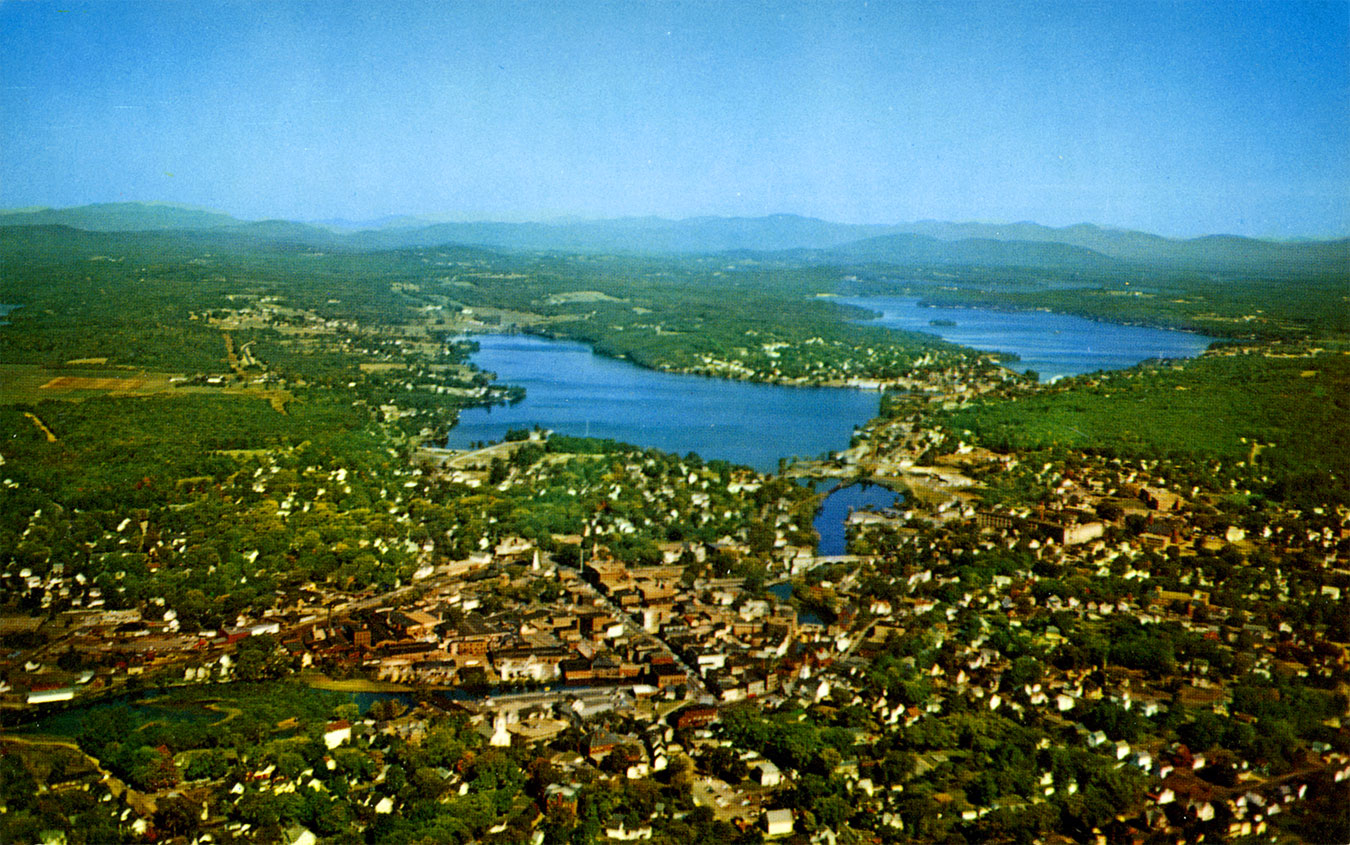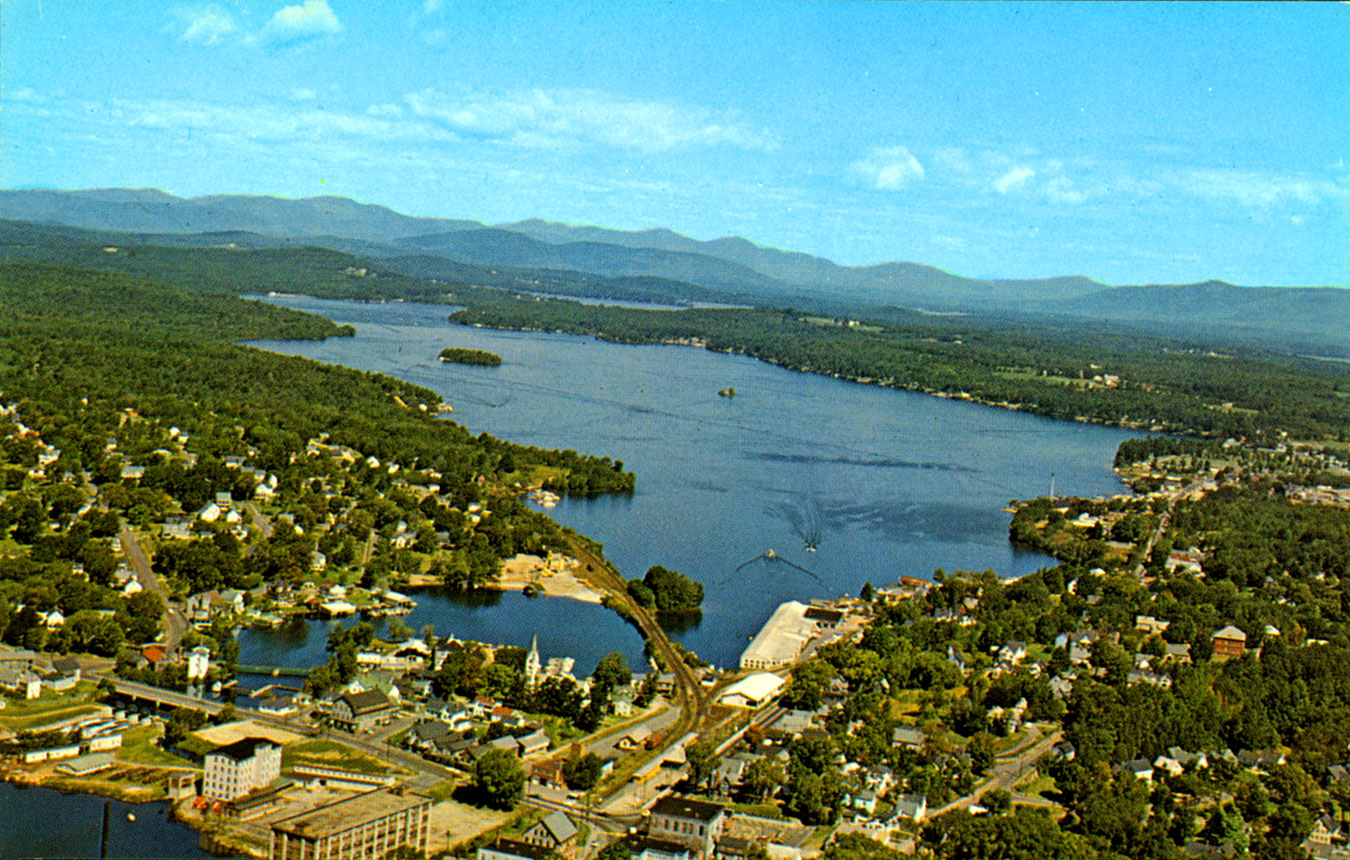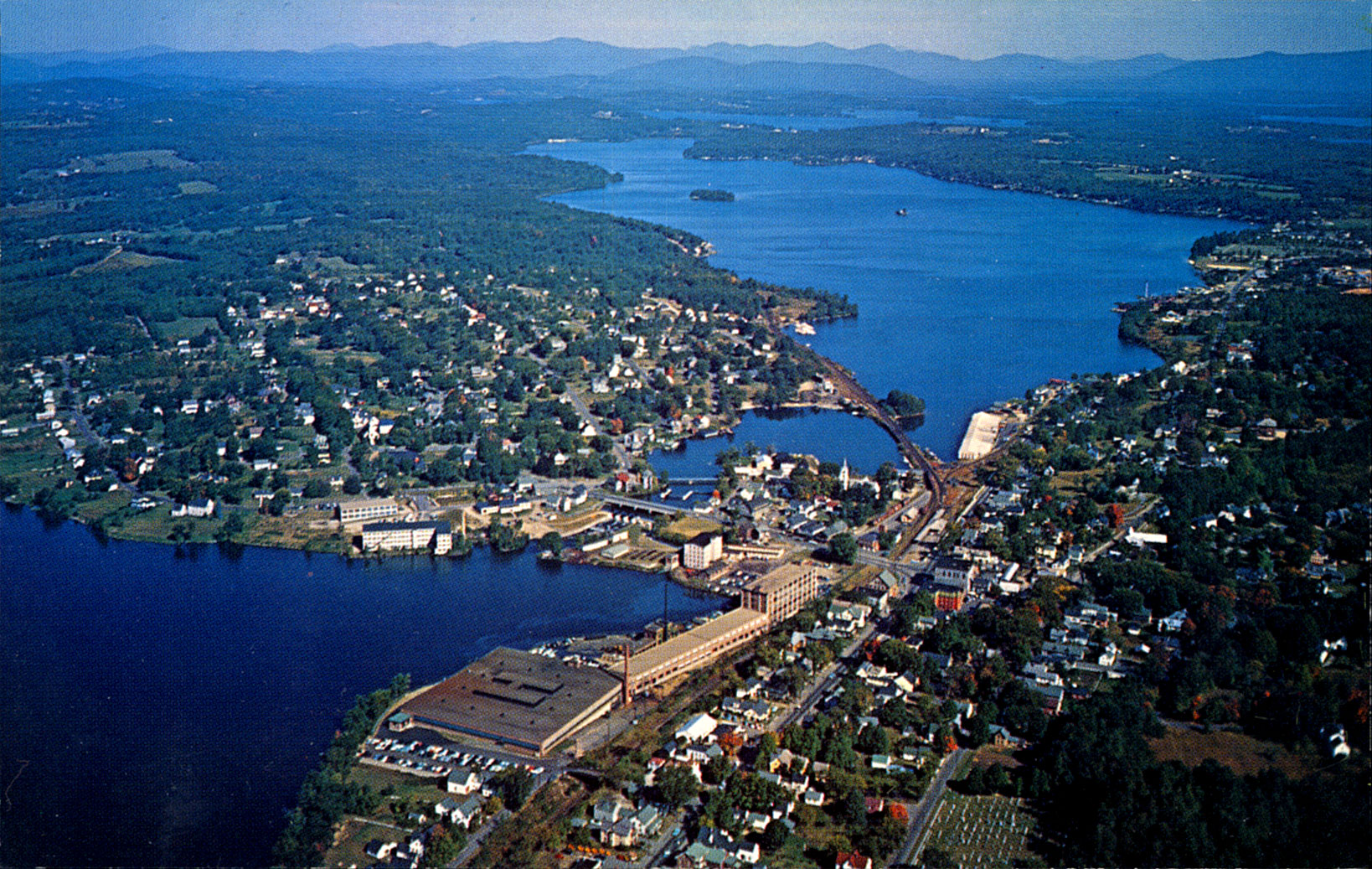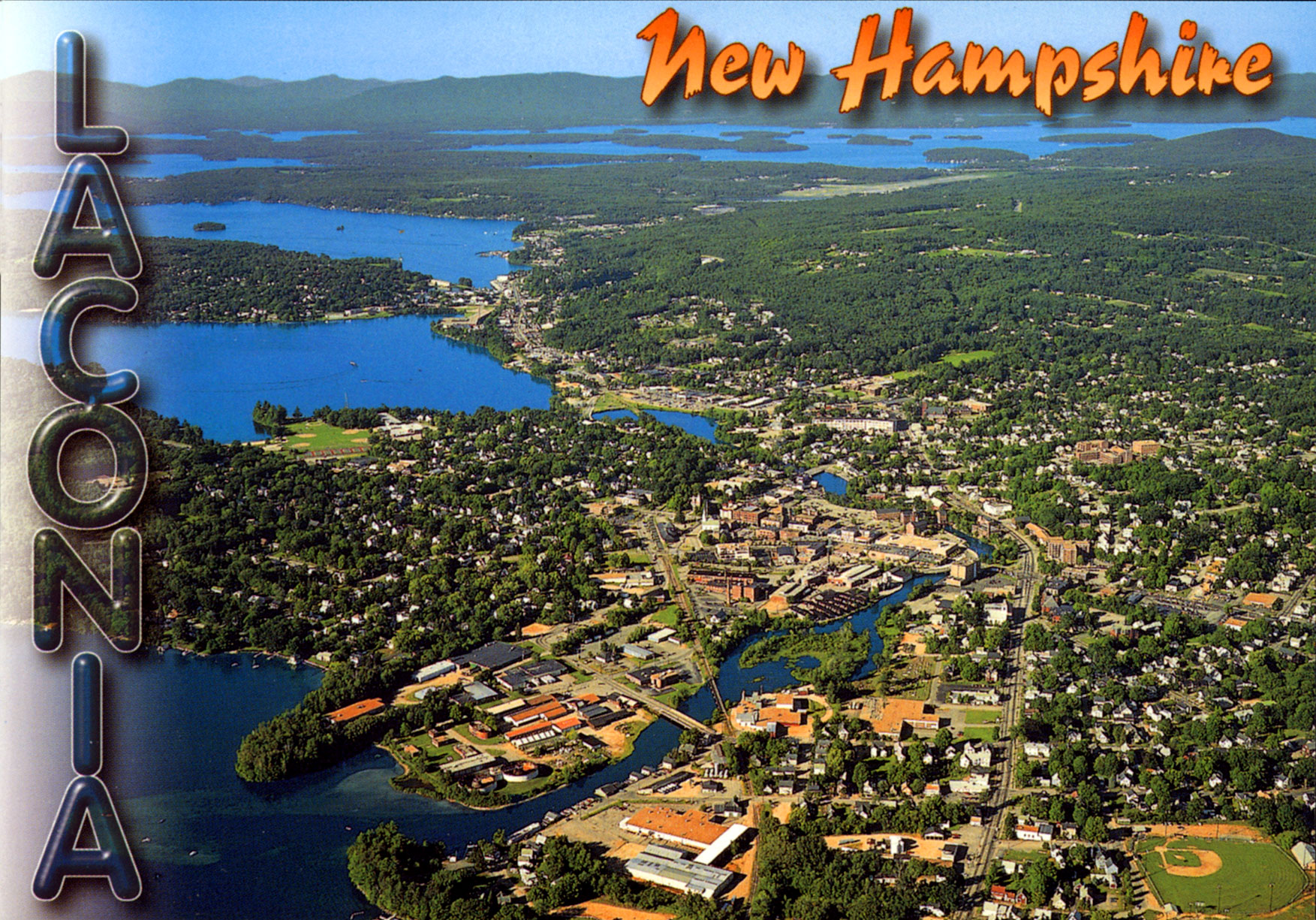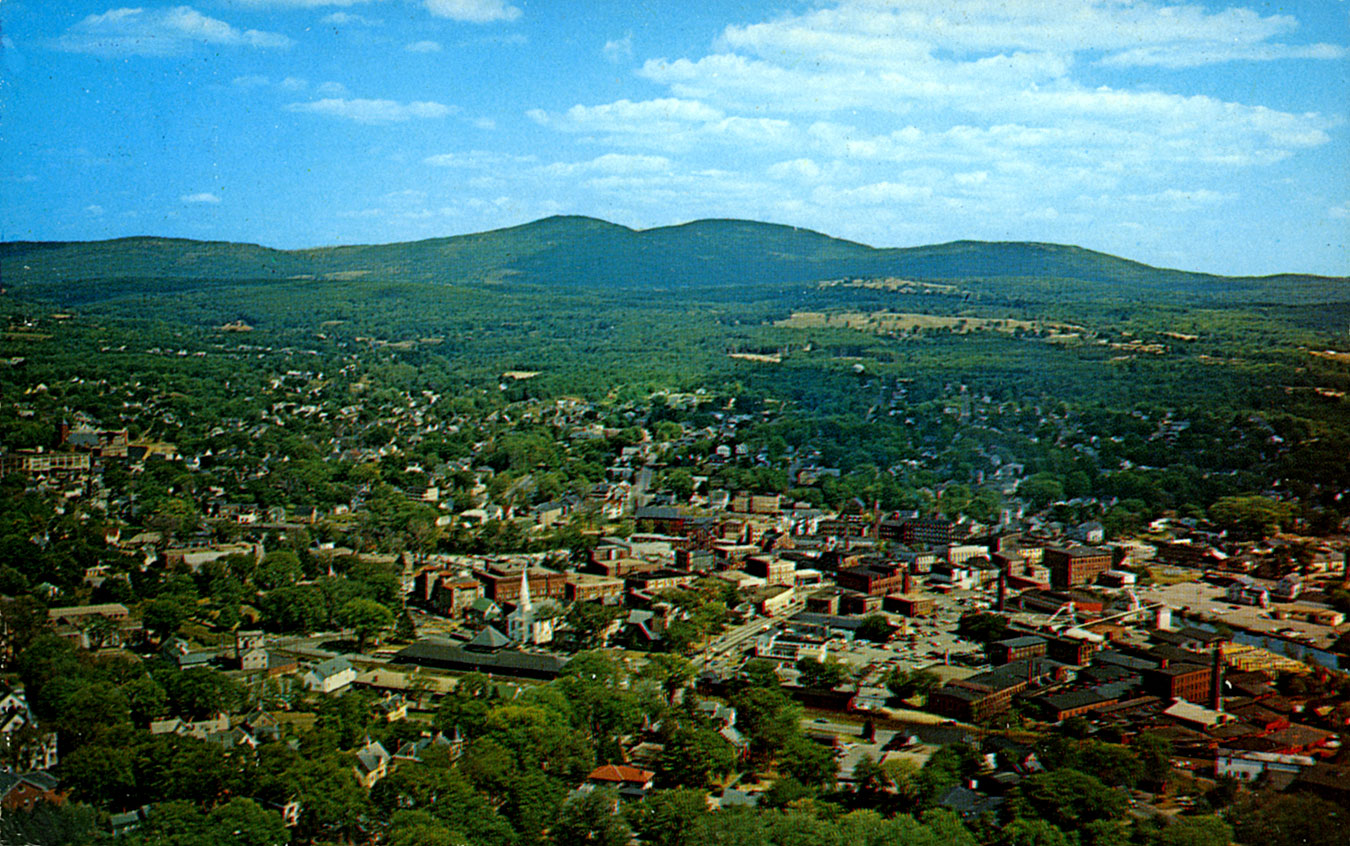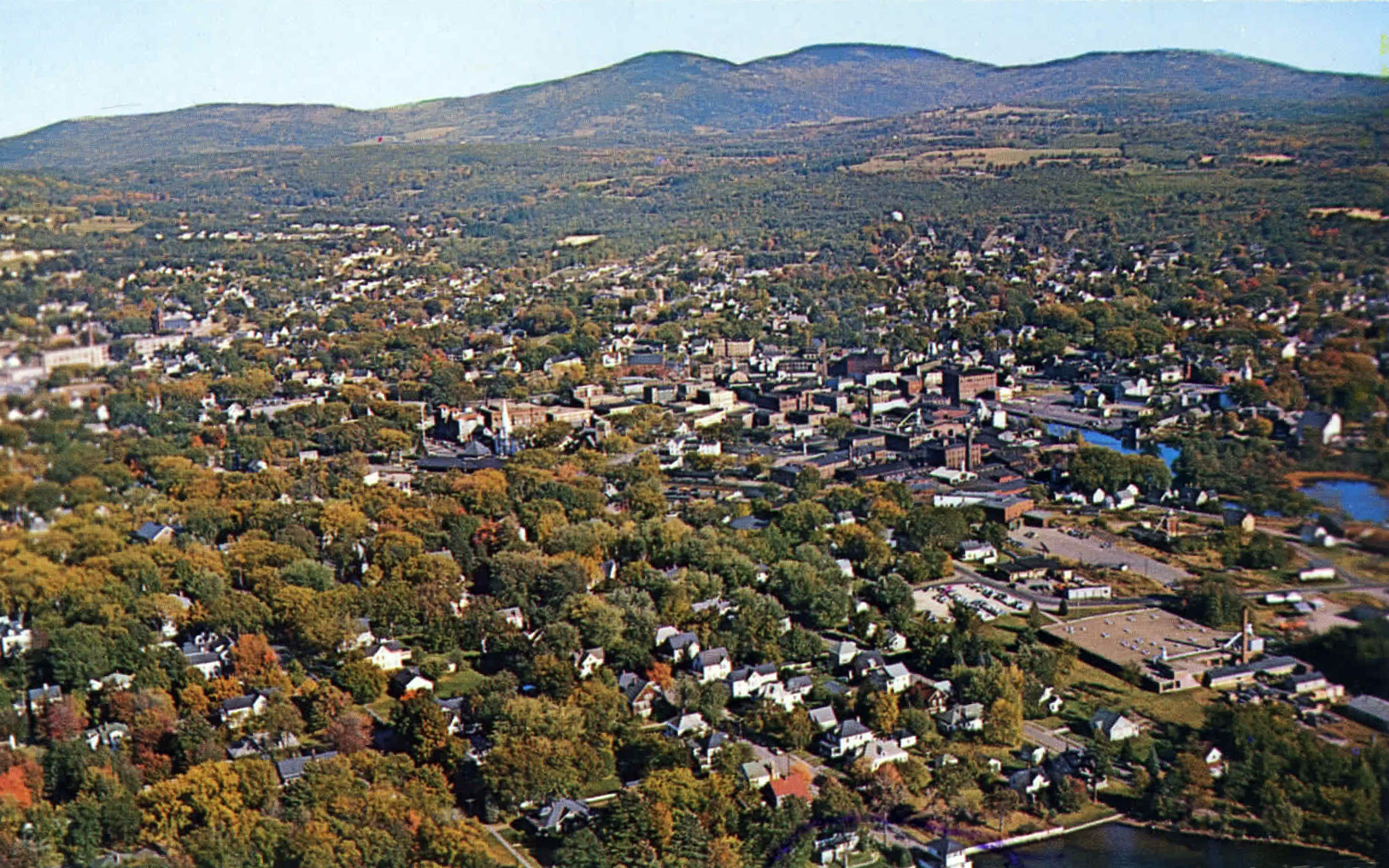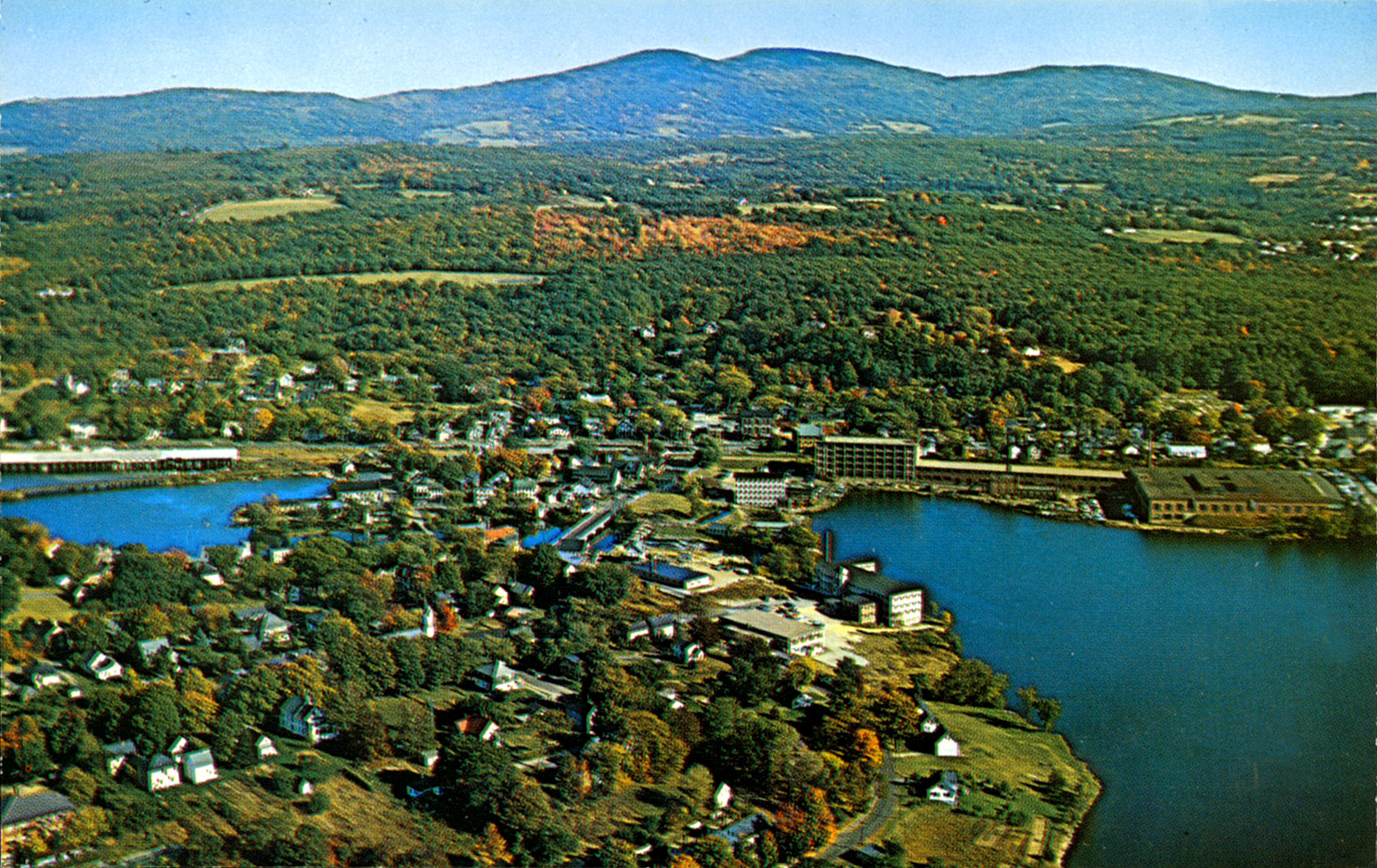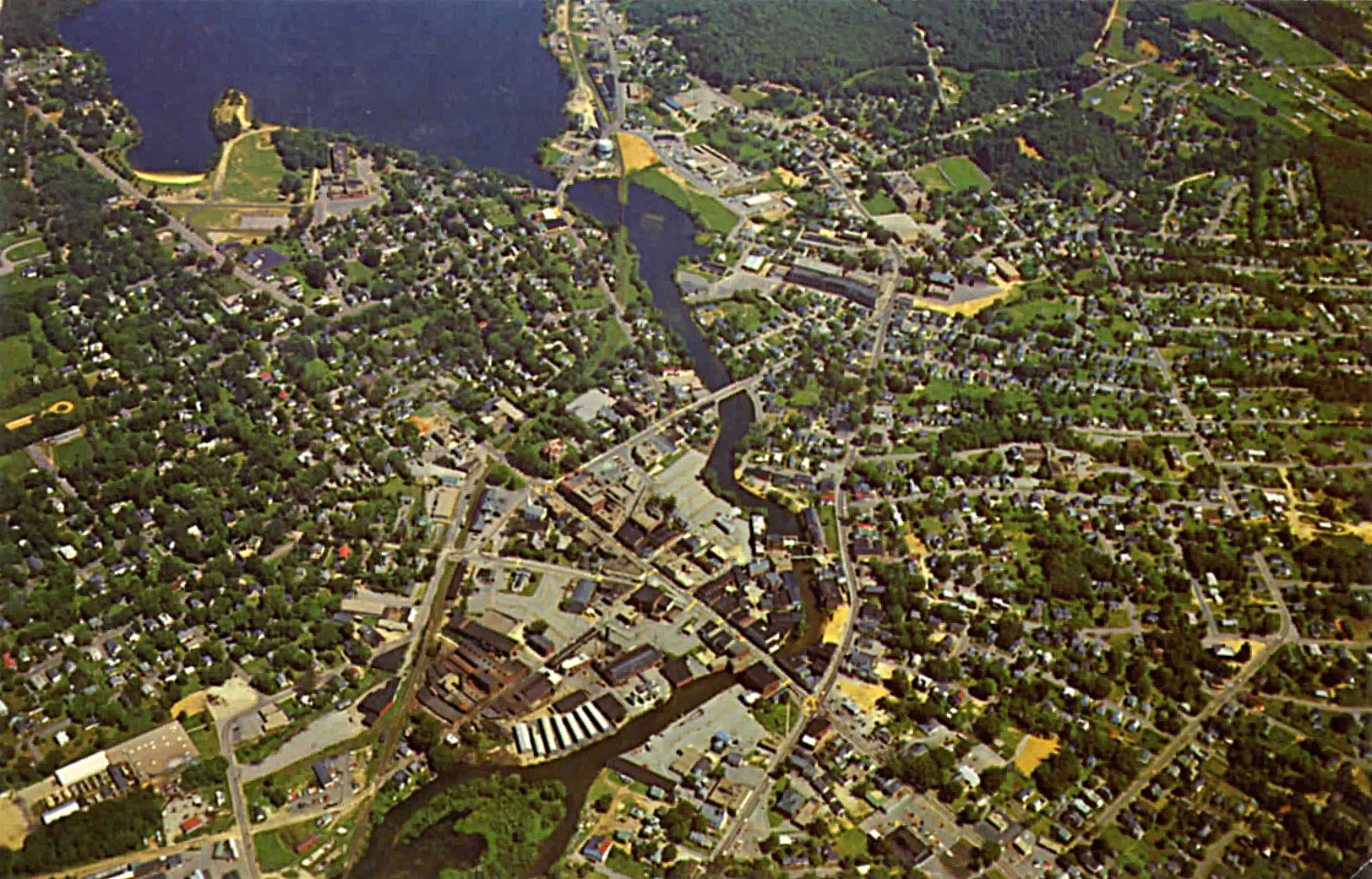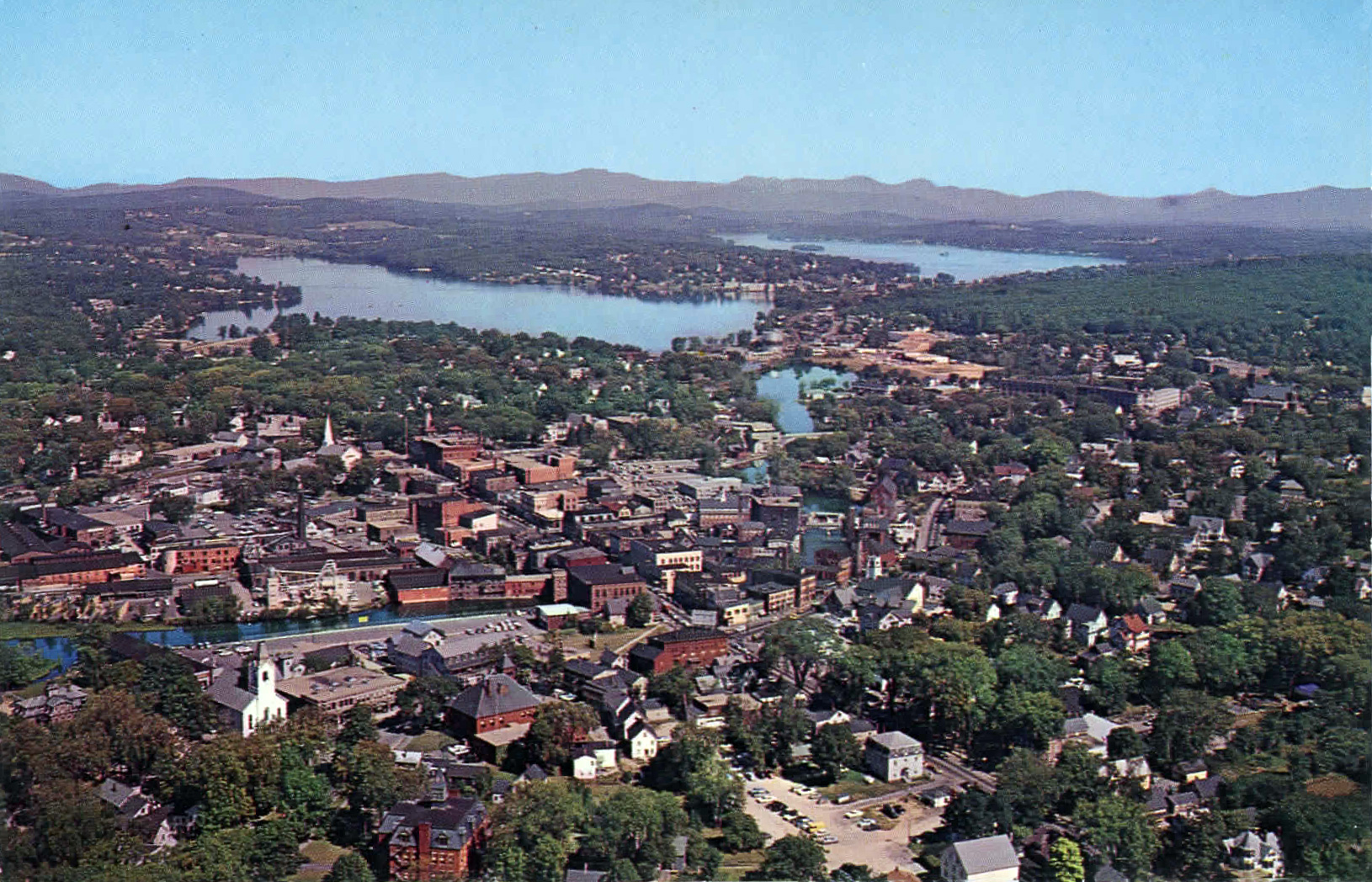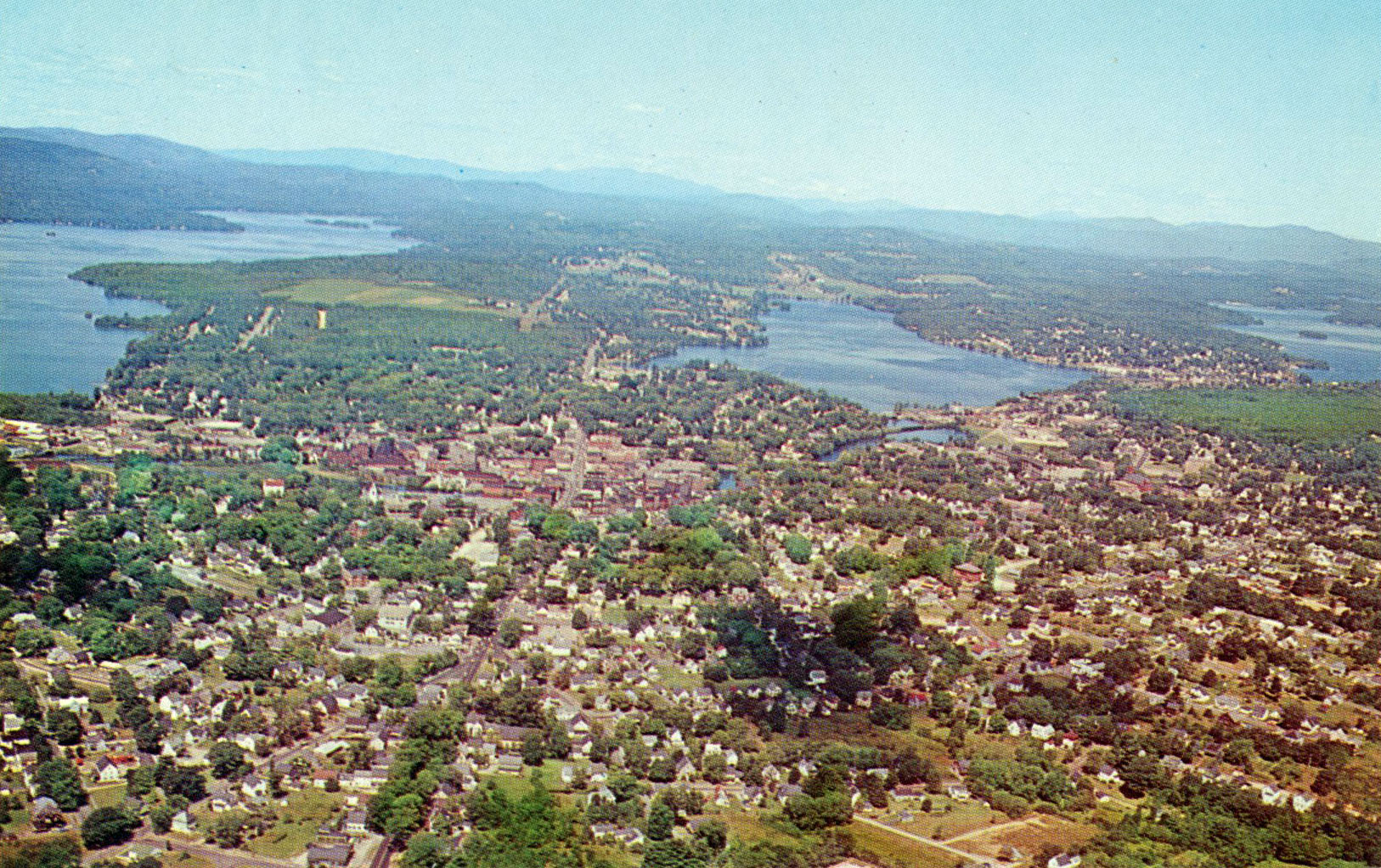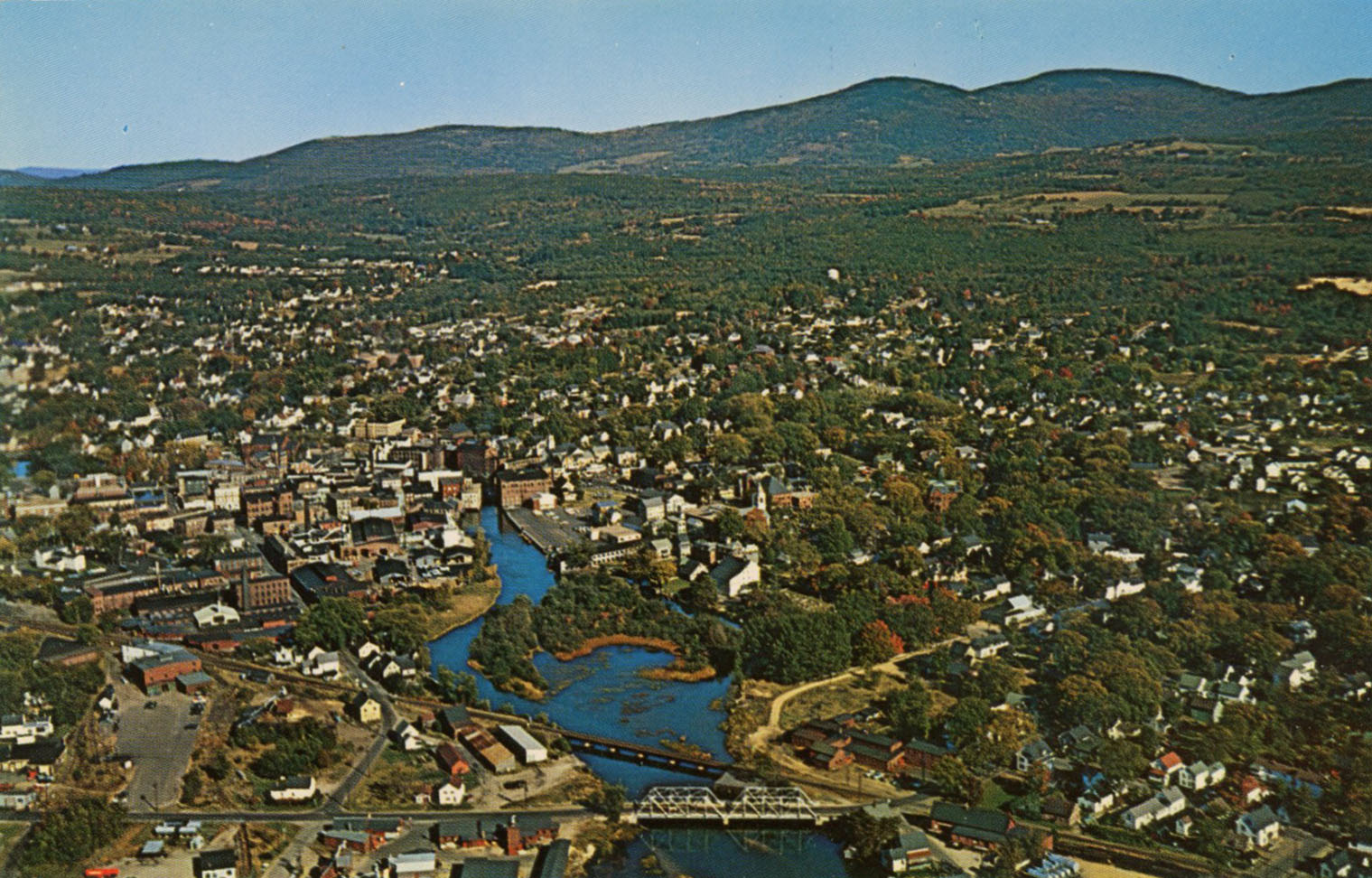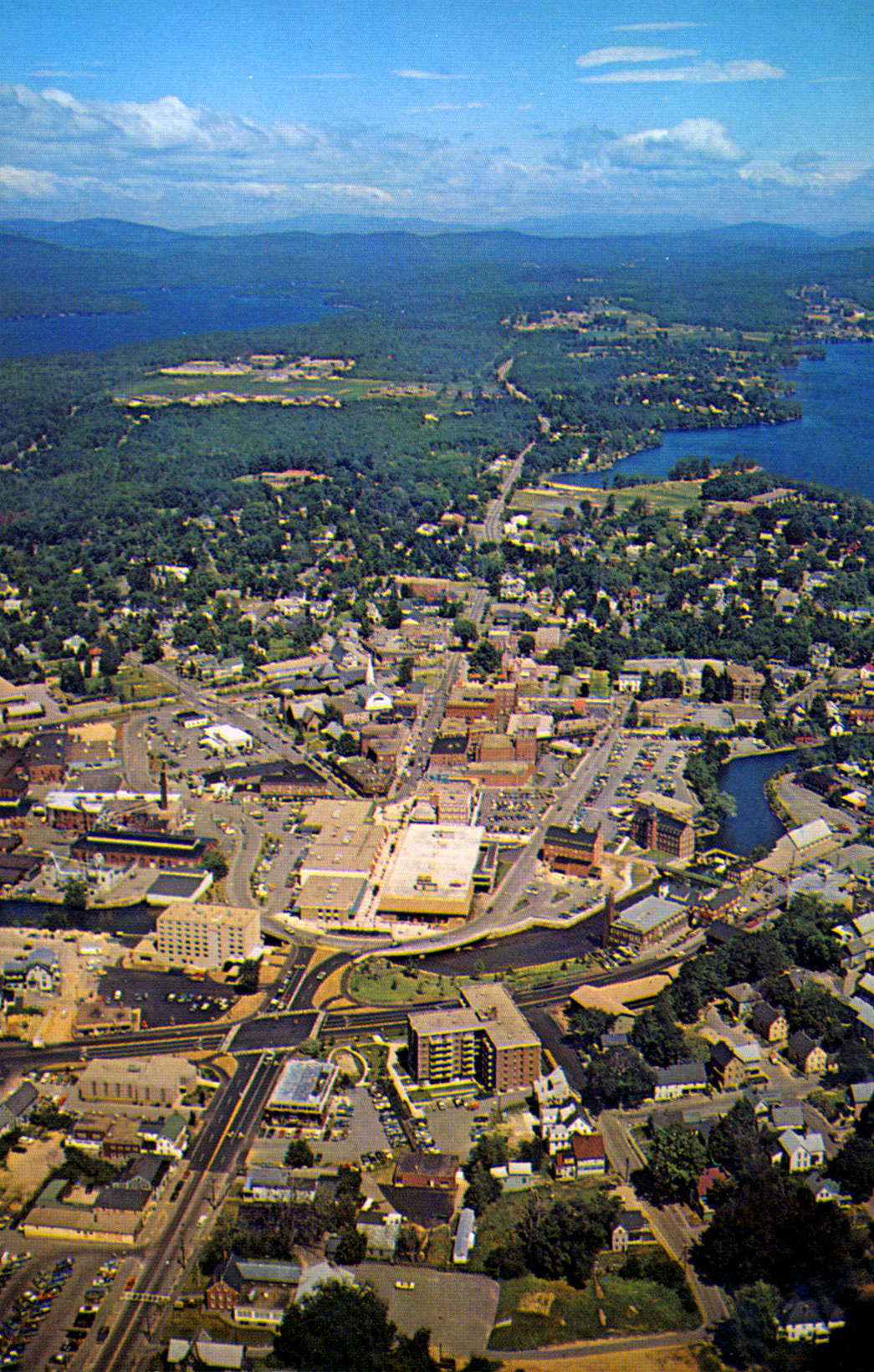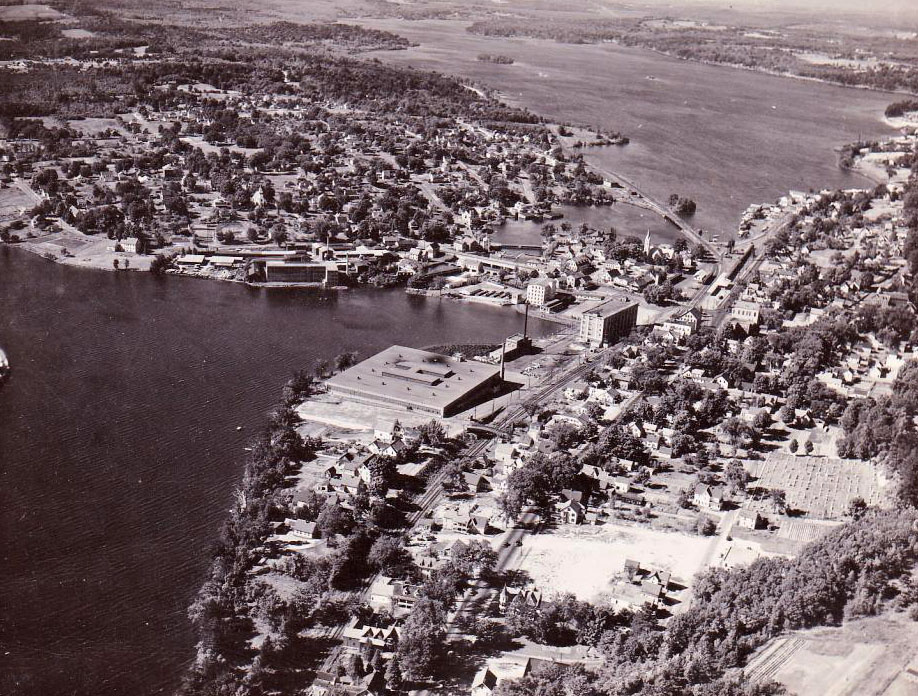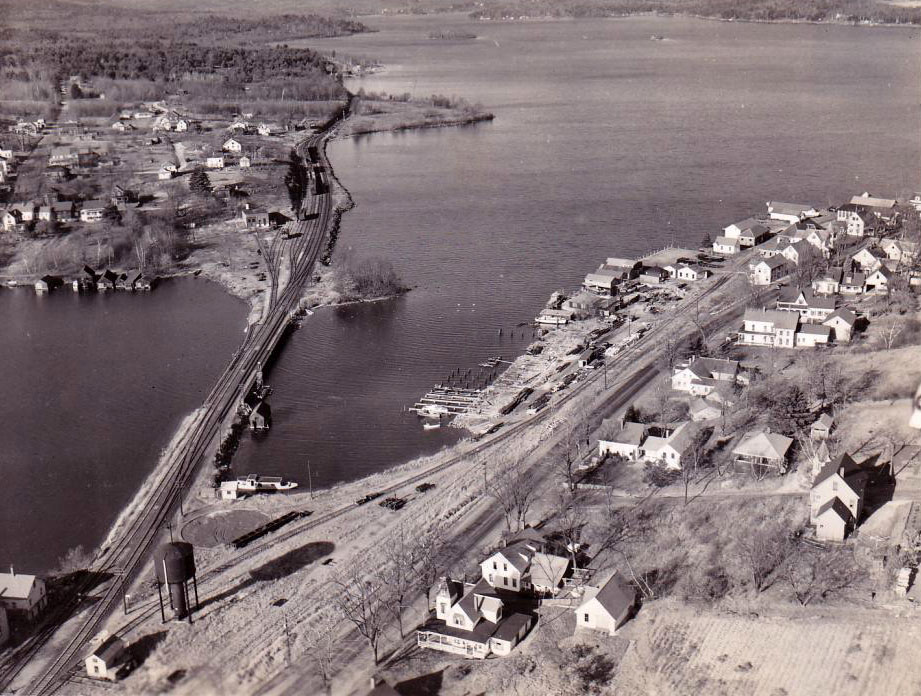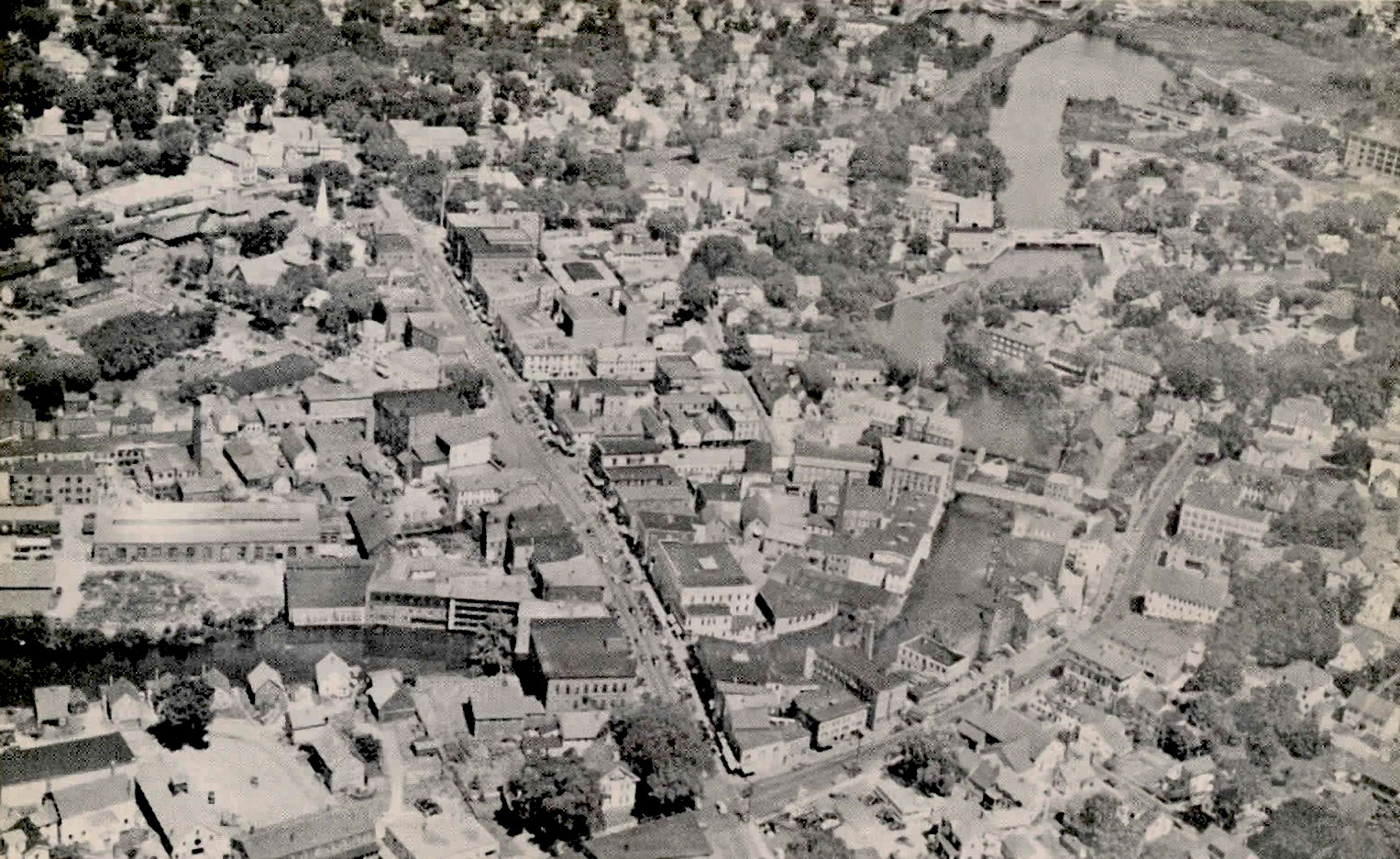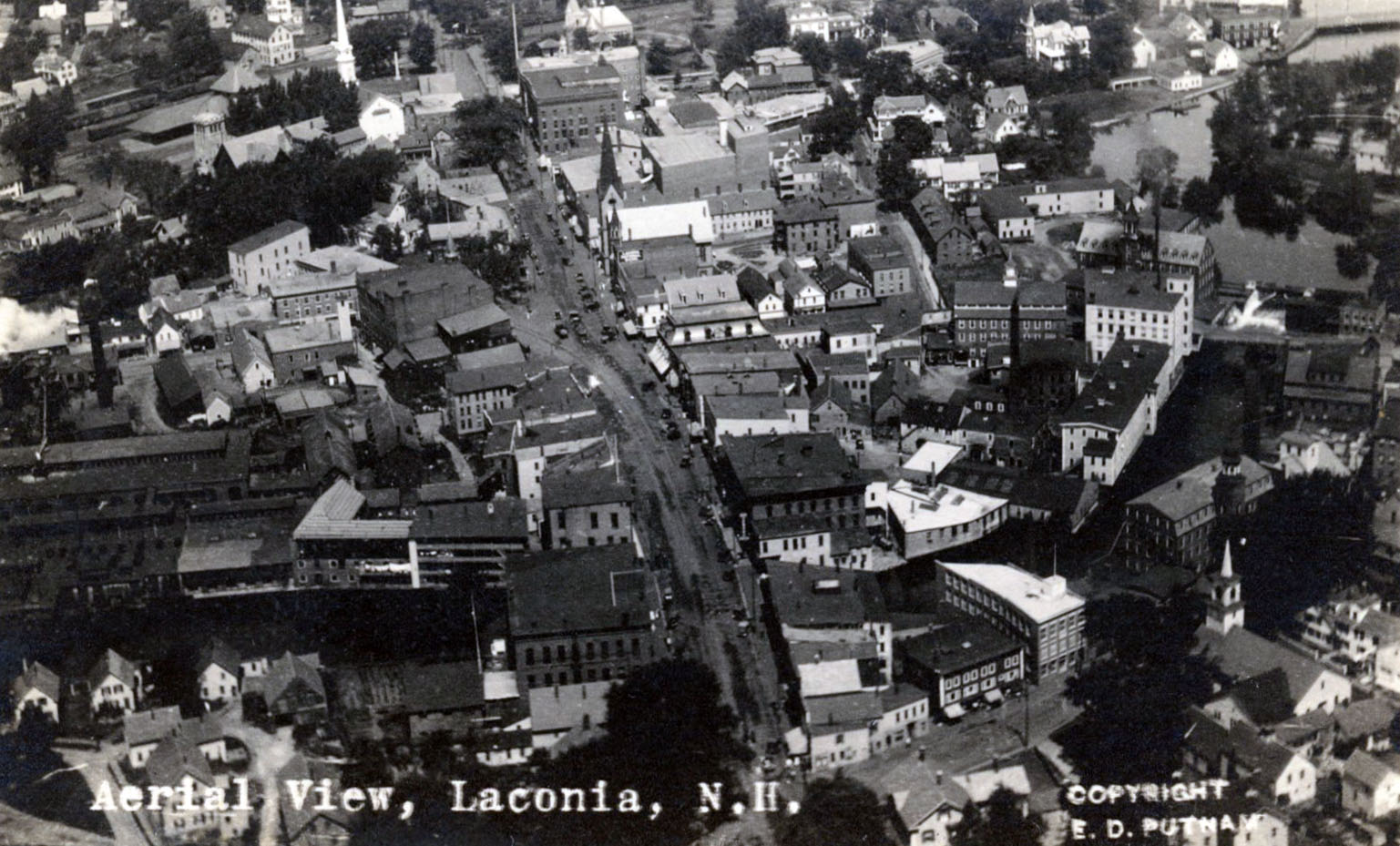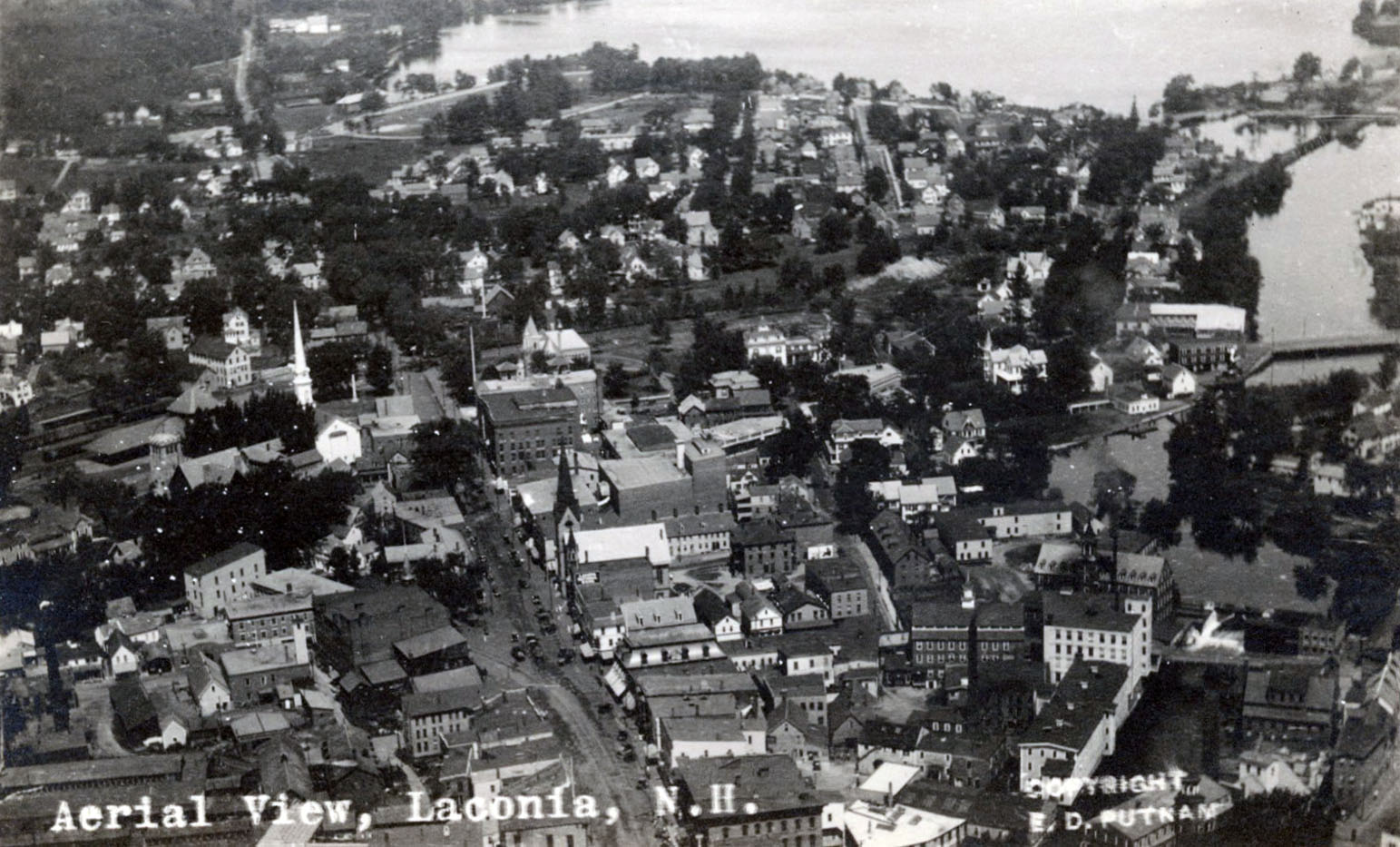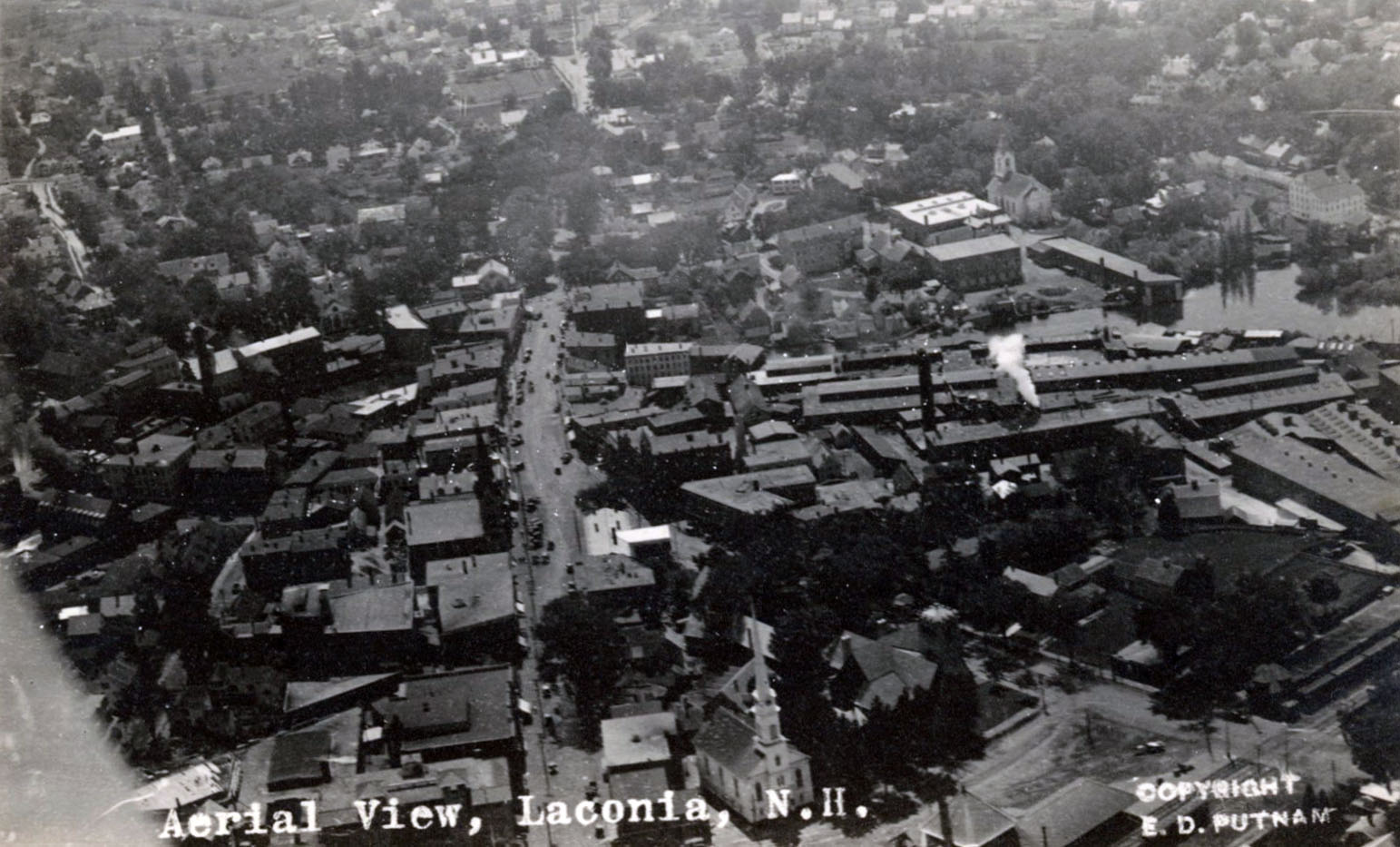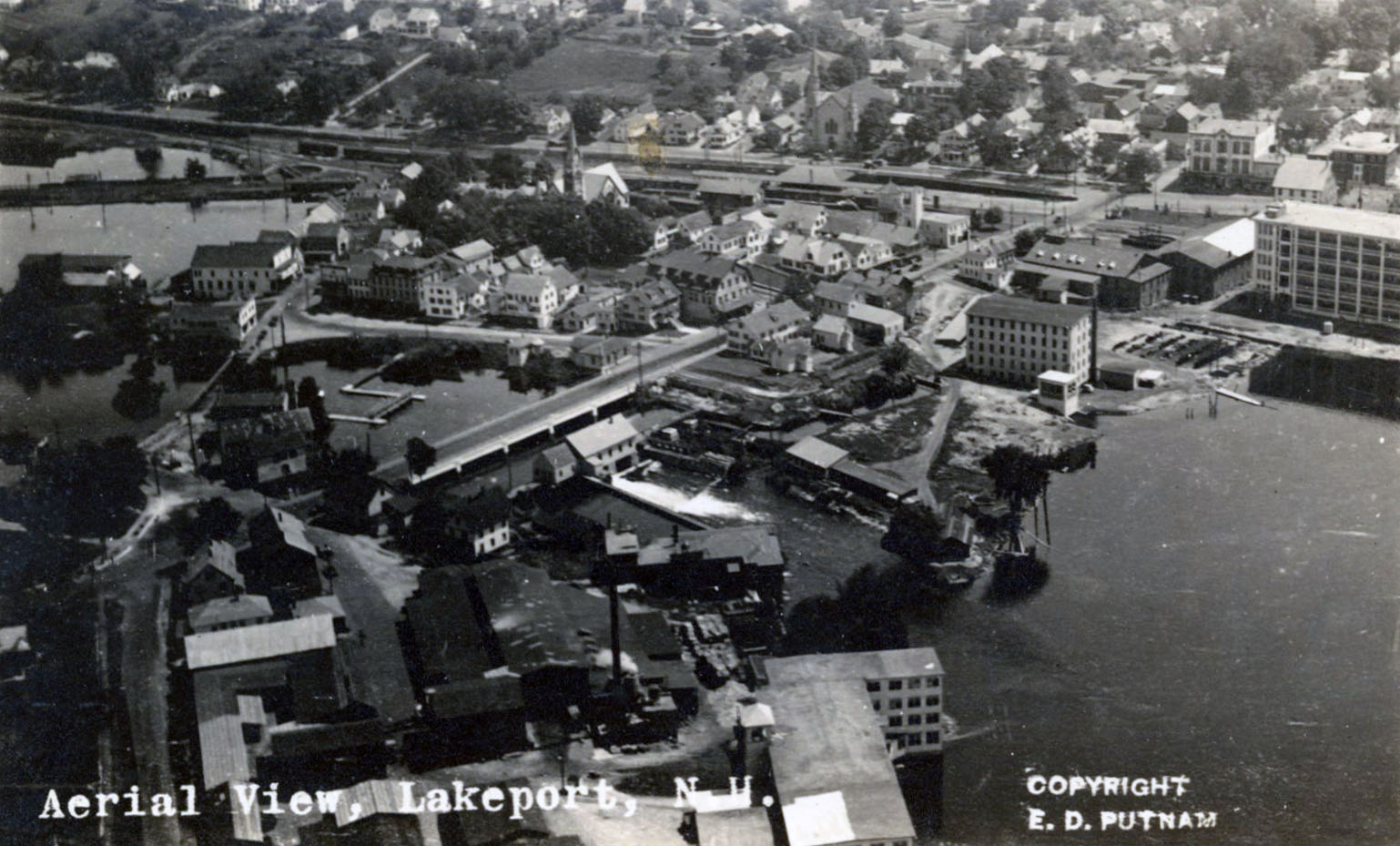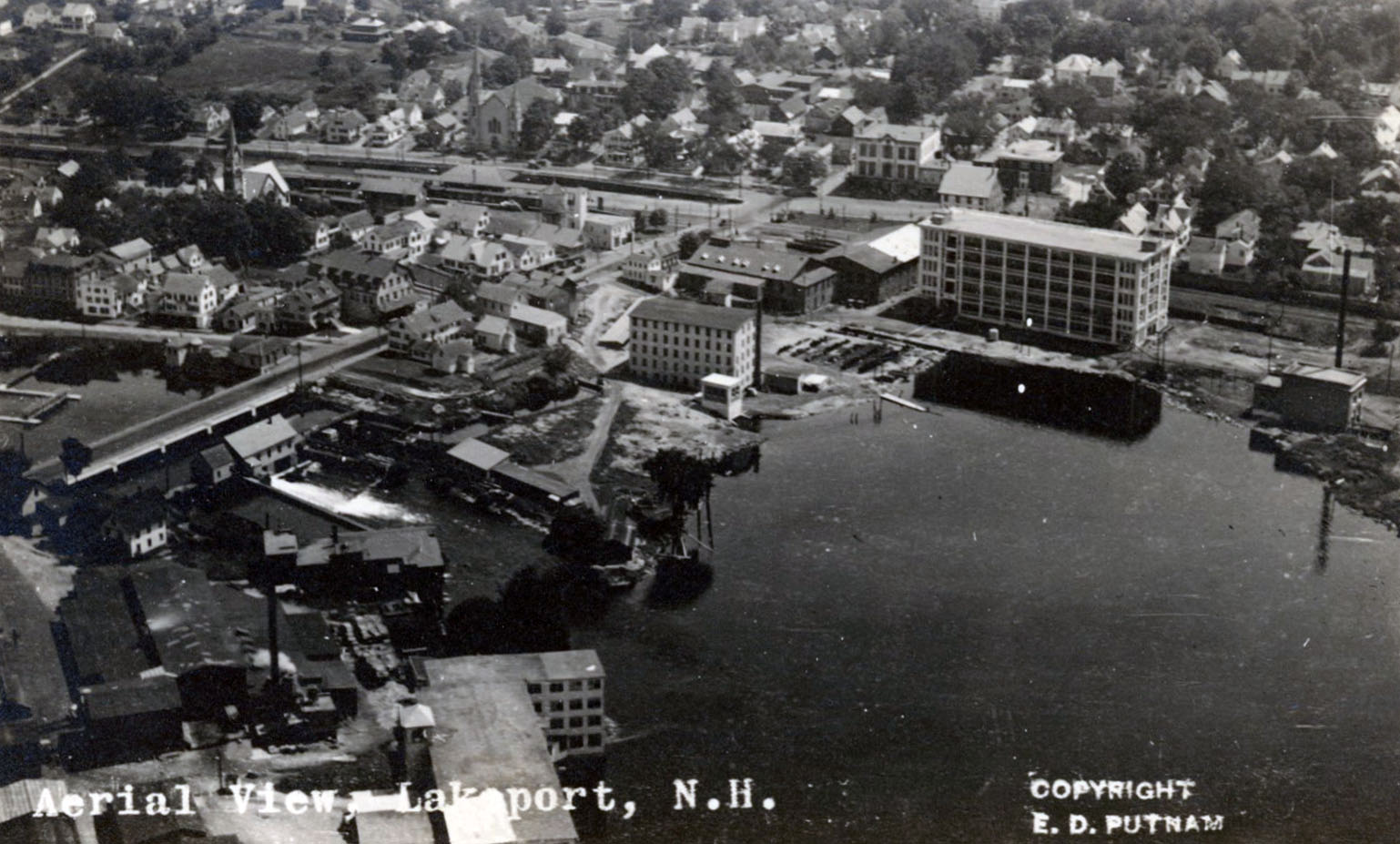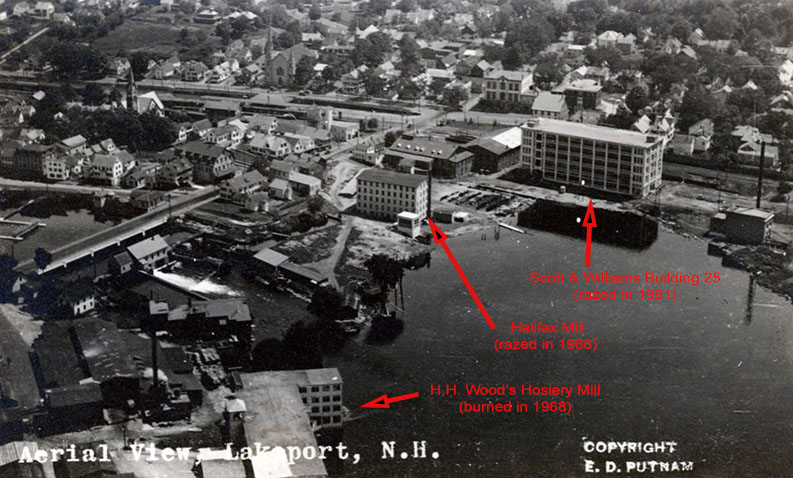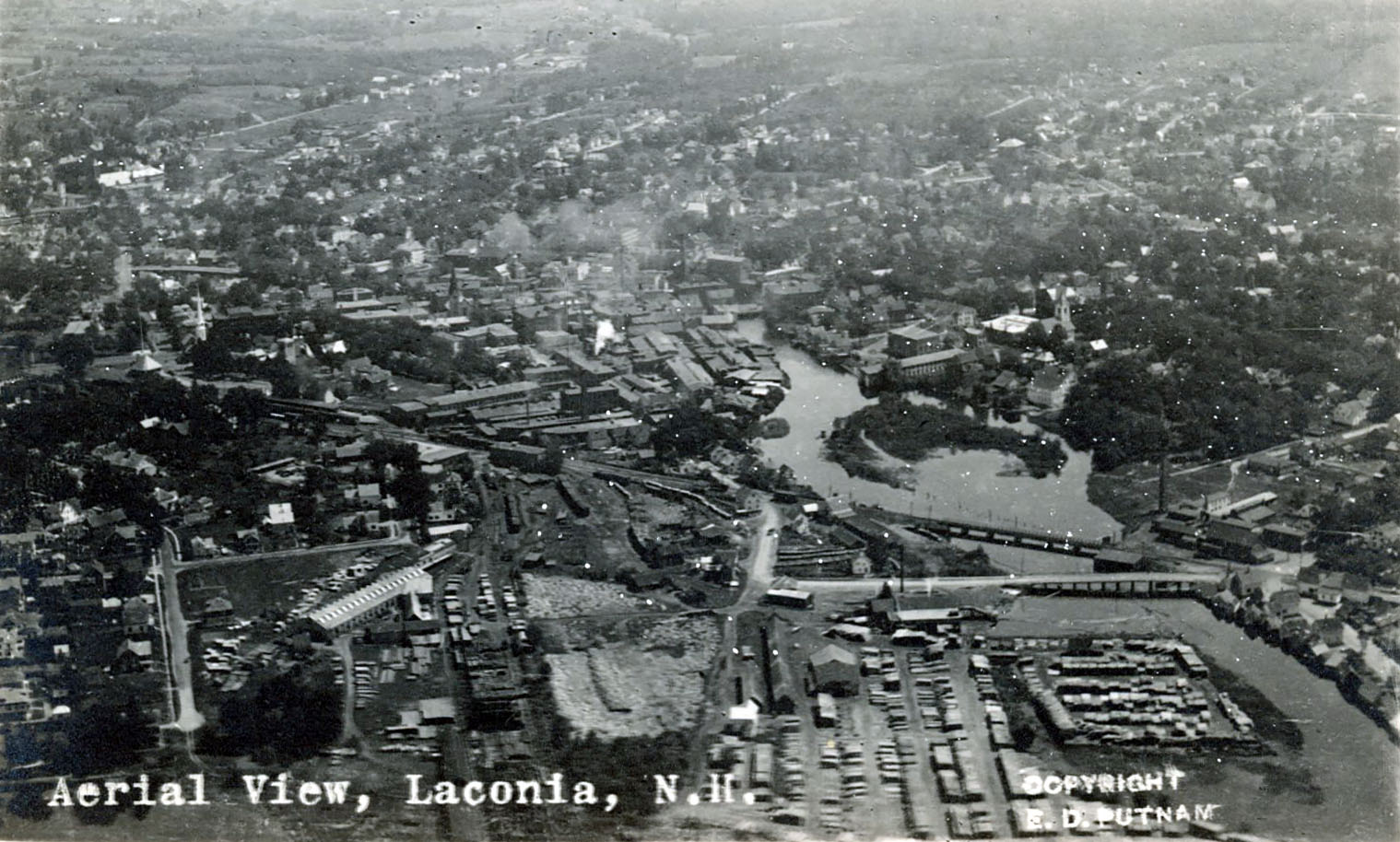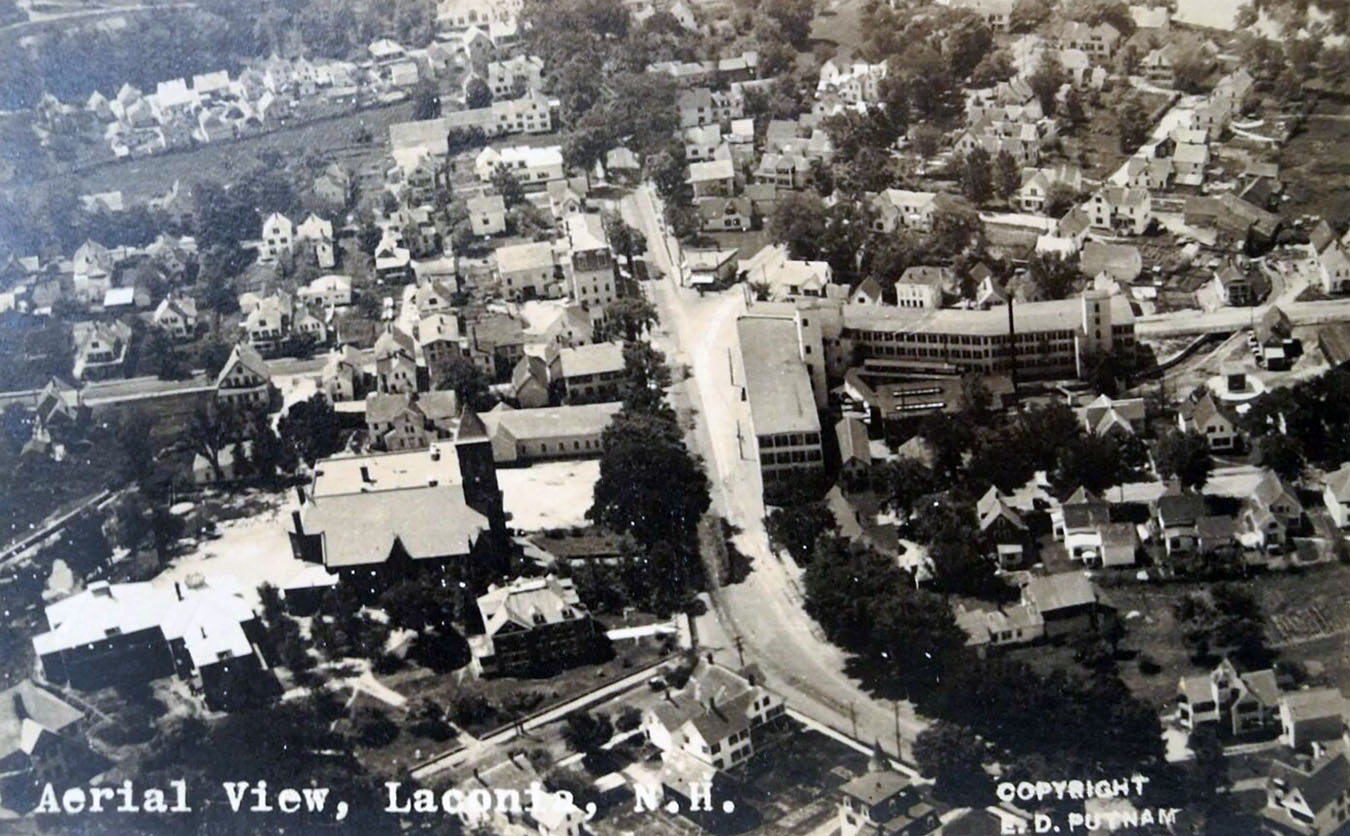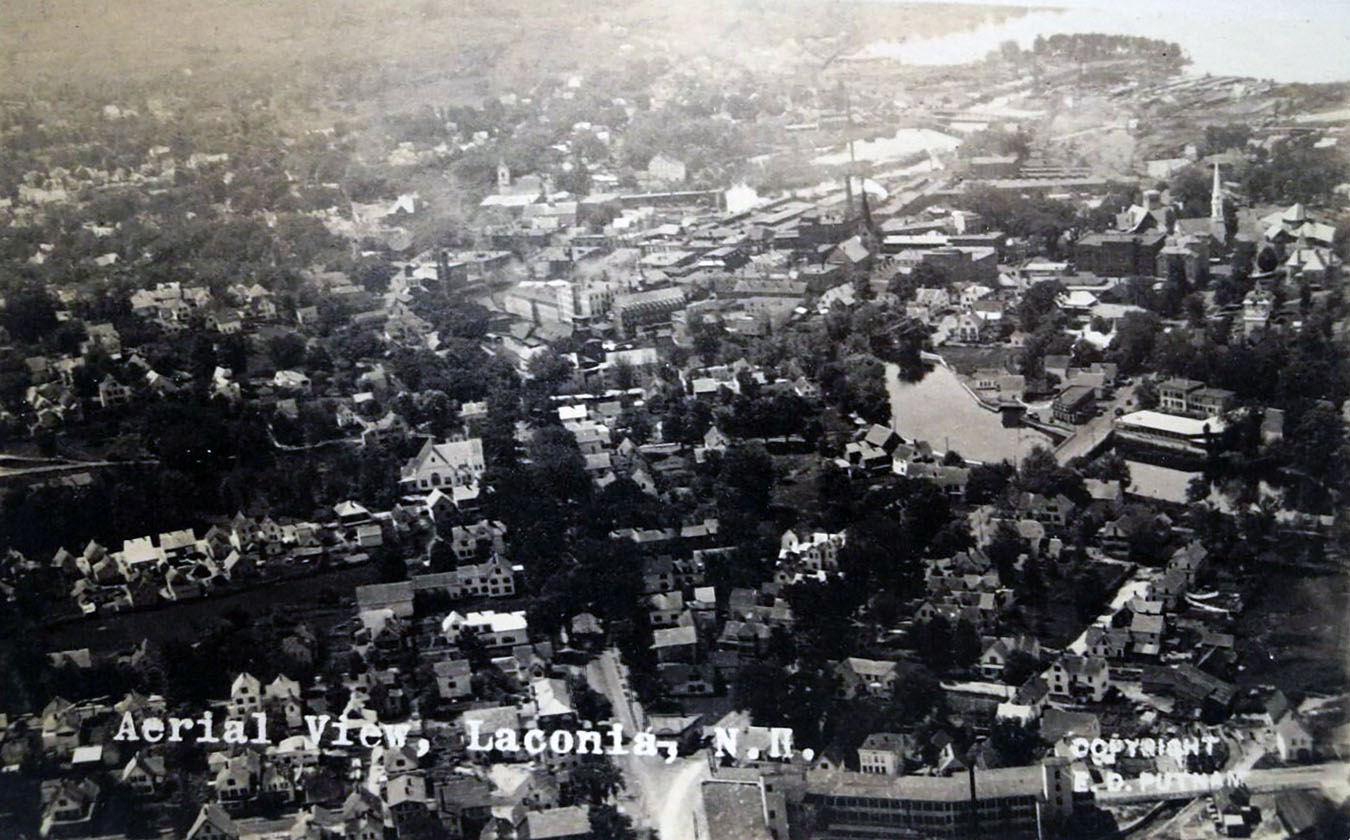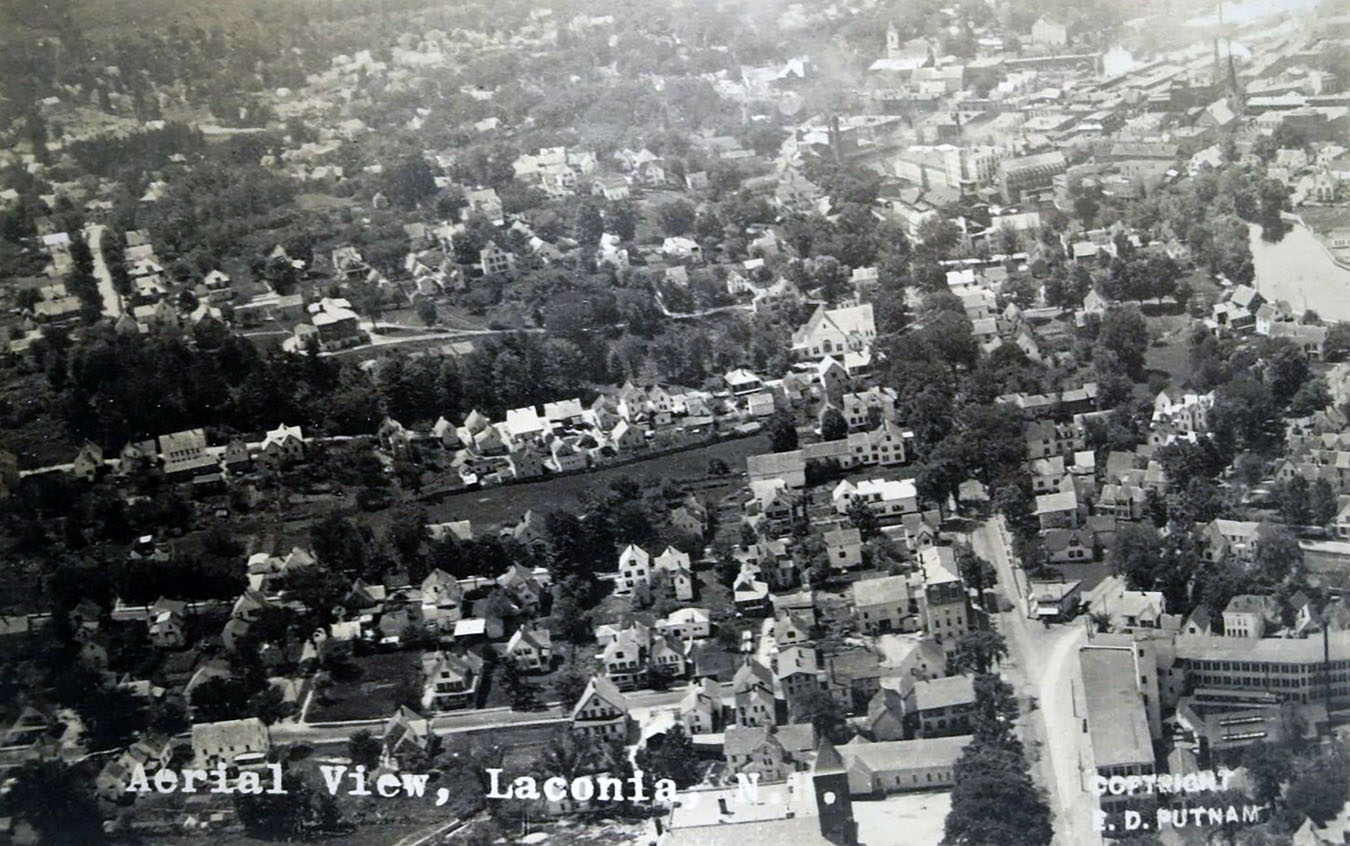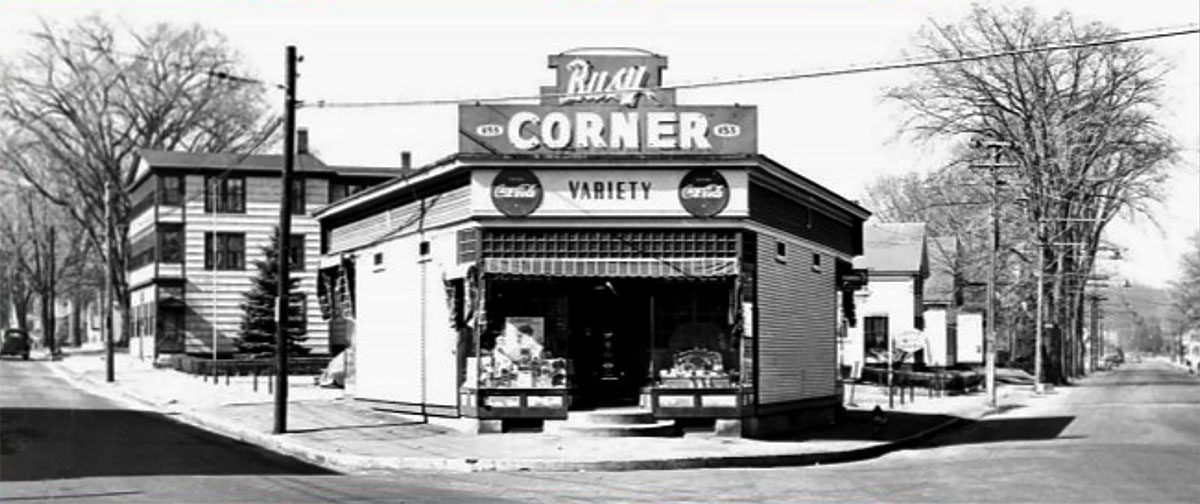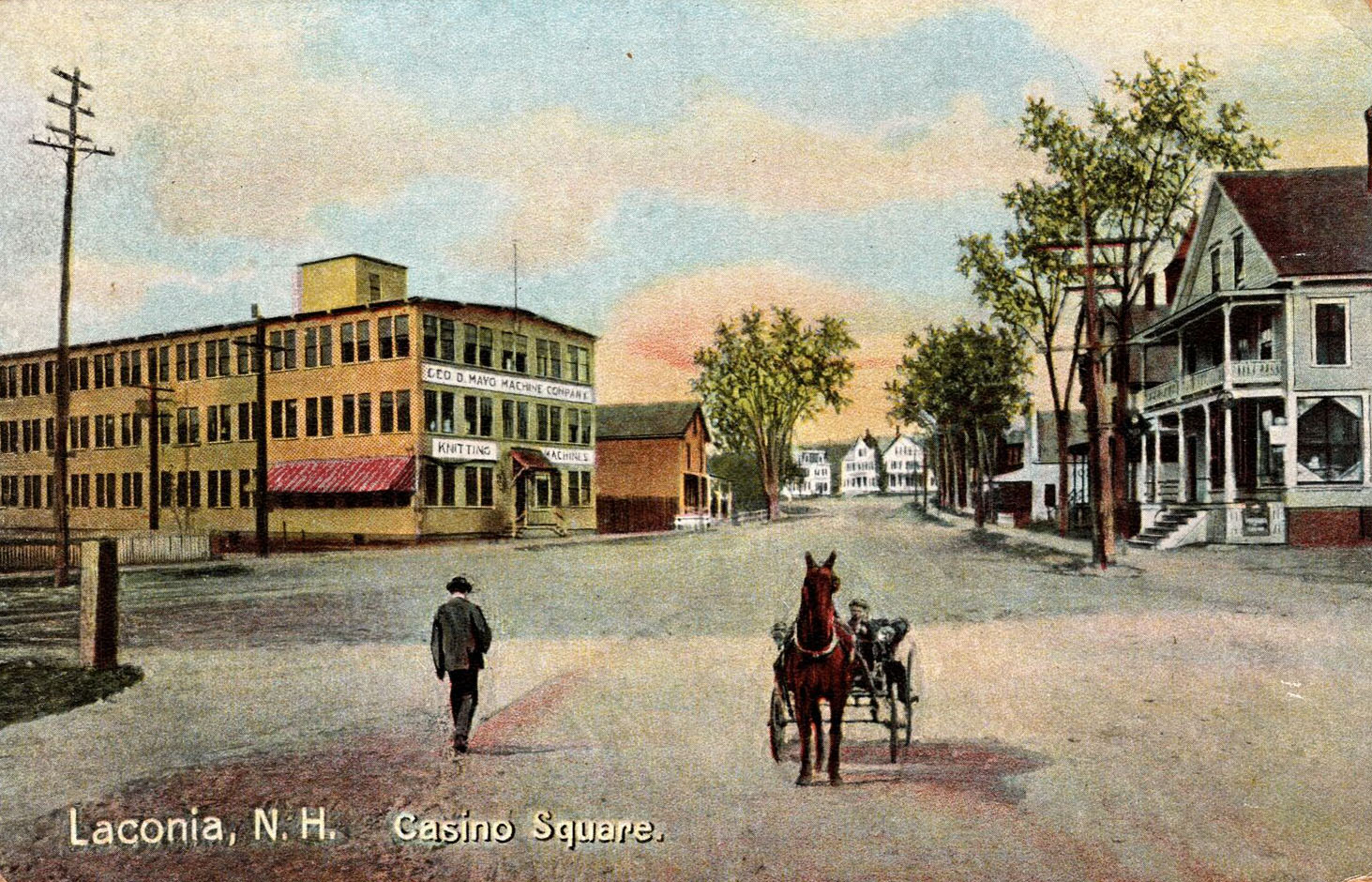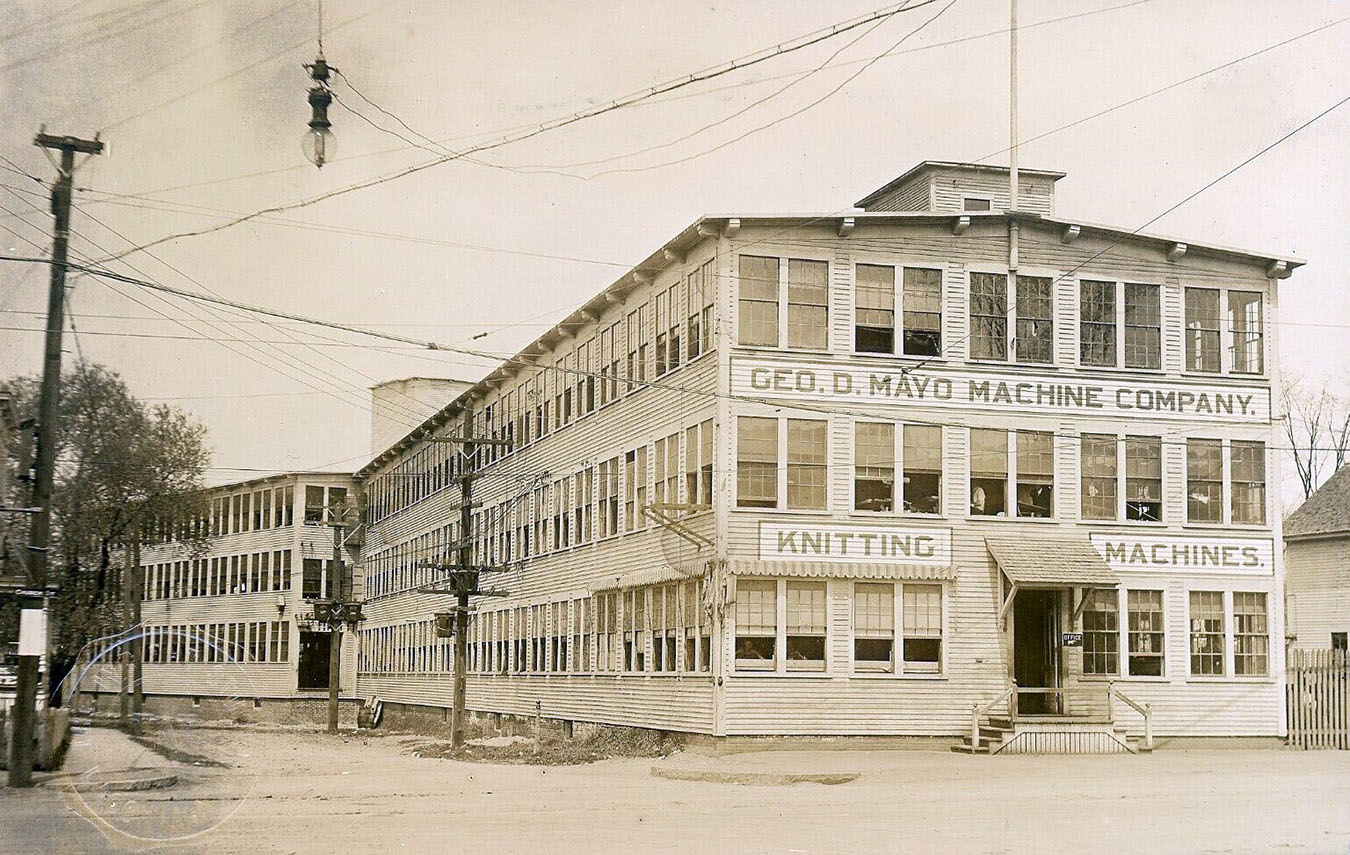Laconia Lakeport Aerial Photo Gallery
In the mid-1920s, aerial photographer E.D. Putnam took the earliest aerial photos known of Laconia, Lakeport, and Weirs Beach. Below is a gallery of Putnam’s photos of Laconia and Lakeport.
Main Street from the opposite direction, looking South. The roofs of the Laconia Car Company, known colloquially as the Car Works, are seen clearly.
View #1 of Normandin Square. This is the fork at the intersection of Union Avenue and Church Street.
Normandin Square
At the time of the Normandin Square aerials, this location was known as Casino Square. The Casino name came from a late-1800’s roller skating rink. Back then, the word “casino” meant any public gathering place used for pleasurable activities. The word only became associated exclusively with gambling in the 20th century.
On December 26, 1948, the square was renamed in honor of Dr. Armand Normandin, an obstetrician who had delivered many Laconia babies. (Just past the square, F.E. Normandin founded his law firm, now known as Normandin, Cheney & O’Neil, in 1914.)
The square also became known as Busy Corner, when in 1917 a store of the same name was built directly on the fork. The store can be seen in these aerial views. The Busy Corner store was torn down in 2016 to make way for a CVS drug store.
Clearly visible at the center of the aerials are the large buildings of the Scott & Williams factory, which manufactured knitting machinery. In 2006, the main, original building of the former factory, which ran along Davis Place, was converted into 60 residential units. The ell wing that fronted on Union Avenue was torn down to provide more parking and better visibility for the development.
An old postcard of Casino Square postmarked in 1908. The George D. Mayo Machine Company was acquired by Scott & Williams in 1910.
The Fair Street Crossing
The 1920s aerial photo of the Fair Street Crossing shows two bridges crossing the Winnipesaukee River just south of downtown. Seen are the first street bridge, which was built circa 1883, and the railroad bridge, built in 1893.
The railroad bridge crosses the Winnipesaukee River on a 228-foot long, multi-span, deck plate girder bridge. The six spans are supported by low stone and concrete piers and abutments. The timber bridge deck was replaced in 2015.
The color aerial shows the railroad bridge as well as the second street bridge. The steel truss street bridge was built in 1927. This second bridge closed on October 24, 1972. A new, modern Fair Street Bridge for vehicle traffic opened on June 6, 1973. The new Fair Street Bridge deck was replaced in 2007.










